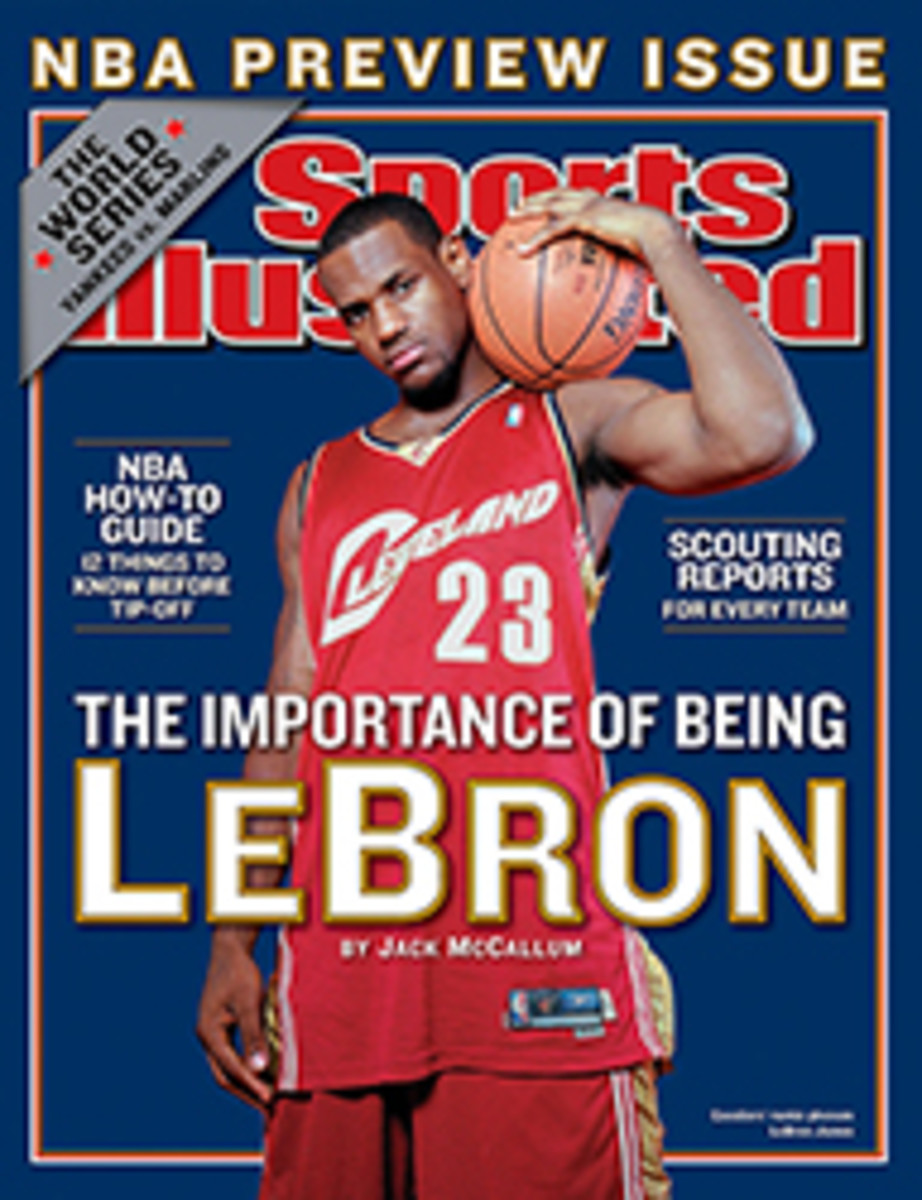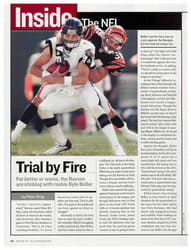
A Perfect (Hang) 10 For this champion there was no better way to grow up than on a surfboard
I admit it: I was a lucky kid. I grew up in Hawaii, surfing 280 to
290 days a year, mostly on a beach called Pine Trees, which was a
two-minute walk from my family's home in Hanalei, on the island
of Kauai. We weren't rich--my dad, Phil, was a carpenter, and my
mom, Danielle, was a salesclerk--but when you live in the Aloha
State, you're never far from fabulous surf. ¶ I was eight years
old the first time I rode a real board. My younger brother,
Bruce, and I had been asking my dad if we could move up from
boogie boards, and on Christmas morning we discovered a pair of
surfboards under the tree. That afternoon we were in the waves
having a blast. Surfing on Christmas: That's true Hawaii. ¶ Back
then I was what surfers call a "grom"--I didn't know what I was
doing. I thought the waves at Pine Trees were eight to 10 feet
tall, even though they were more like three or four feet. But
my brother and I were so stoked to be in the water, it didn't
matter. My dad was a former competitive surfer, and he helped
teach us.
You can surf in a lot of states, from Rhode Island to California,
but in Hawaii you can live the sport. We would go to the beach
every day after school to ride, and some days we'd bring
grub--Doritos, Snickers, Coke, all the key food groups--and make
a fire. It was an unbelievable childhood.
Surfing was born in Hawaii hundreds of years ago. It's so much a
part of the culture that when I was in elementary school, the
teachers would show us these spooky stick drawings of surfers
done ages ago by native Hawaiians. Some of my friends whose
families had lived in the islands for generations told amazing
stories about ancestors surfing on carved-out trees. My father
and his friends talked about surfers in their day charging giant
waves on these huge, 12-foot-long boards that didn't even have
leashes.
I got off to a bad start as a competitive surfer. When I was 10,
I entered my first contest and did so poorly that I quit
competing. Not only did I finish behind my little brother, who
won, but I was also beaten by a girl, Keala Kennelly--she
finished third, and I came in fourth. Those results don't seem so
embarrassing today. Bruce is now a top pro, and so is Keala.
After about a year I got over that loss and began competing
again. My surfing idols in those days included fellow Hawaiians
Derek Ho and Sunny Garcia, who are former Association of Surfing
Professionals (ASP) world champions, and I tried to be like them.
As I became a better surfer, I tested myself on Kauai's bigger
breaks. In terms of difficulty, Pine Trees, a beach frequented by
locals and tourists, was at the bottom of the totem pole. For me,
the top was a reef break out in Hanalei Bay that you could see
from Pine Trees. You had to paddle 20 minutes to get there, and
it had waves with 30-foot faces. The first time I went there, I
was about 14, and I just sat on my board and watched in awe. But
before long I was catching those waves regularly. When you ride a
wave that big, it's the greatest feeling--you have a buzz the
rest of the day.
During high school I started to compete off the islands. I surfed
in California, Brazil and Bali. Once I skipped two weeks of high
school to hang out on a boat off Sumatra with other surfers for a
photo shoot for a sponsor. Since then I've done pretty well. In
2002 I followed Derek and Sunny and became the third Hawaiian to
win the ASP world title.
Traveling so much and experiencing so many other cultures has
been great, and it has helped me appreciate the aloha spirit, the
friendliness of people in Hawaii. I'm 25 and rarely get to go
home for more than a couple of weeks at a time. When I'm on
Kauai, though, I always head back to Pine Trees. My dad built a
house for me not far from the beach, and whenever I'm home, I
surf there every day.
I guess you might say I'm still a lucky kid.
COLOR ILLUSTRATION: ILLUSTRATION BY JOE CIARDIELLO
Andy Irons is pro surfing's reigning world champion.

